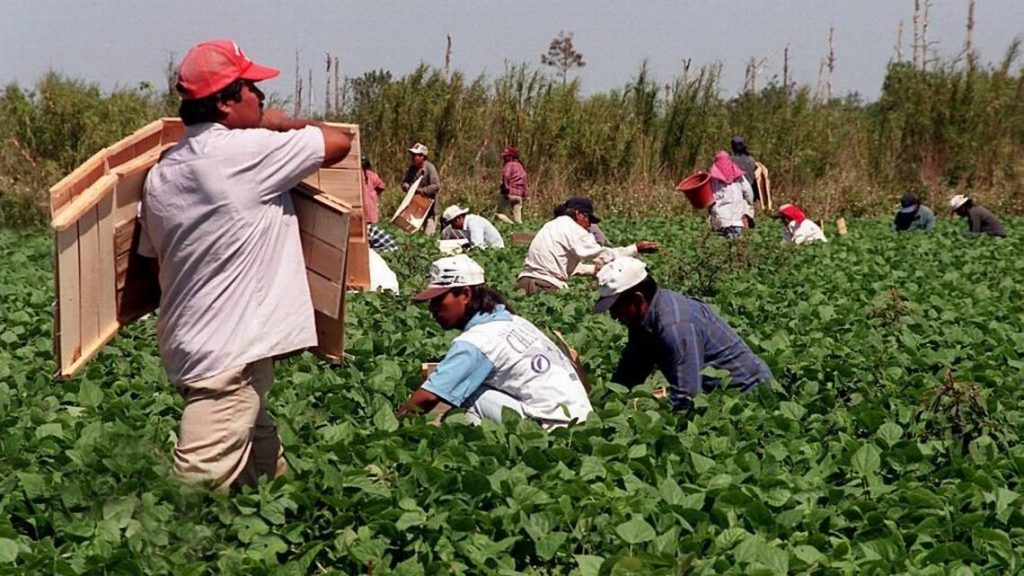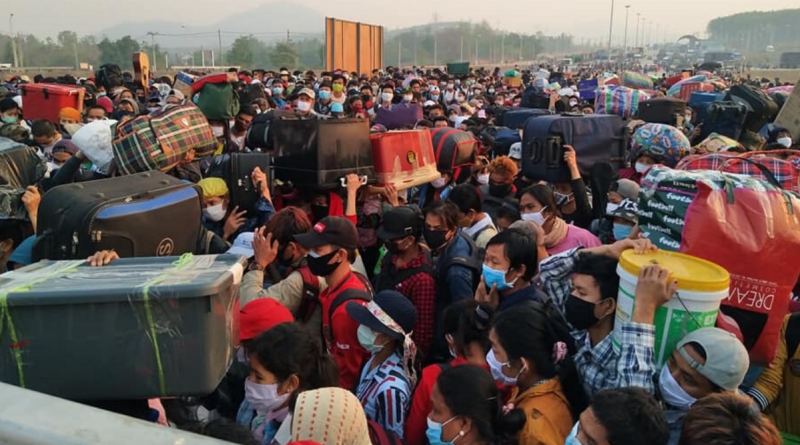Double displacement? Is the digitization of work under COVID-19 edging migrants further away from economic mobility?
By Victoria Kulesza, Master of International Business Candidate 2020
In a trend that has been drastically catalyzed by the spread of COVID-19, the current trajectory of labor is moving on a path that is increasingly digital, data-driven, and dependent on artificial intelligence and automation. However, if there is anything that this pandemic has cast a spotlight on, it is whose work is or is not deemed “essential” enough to preclude them from the social distancing protections online work provides. Overwhelmingly, those that fall outside this scope include undocumented, foreign-born, and asylum-seeking populations.
In the face of impending economic strife, policymakers have failed to consider and include the livelihood concerns that migrant workers have despite the fact that 6 million immigrant workers are at the frontlines of keeping U.S. residents healthy and fed during the pandemic[1]. This population represents a disproportionate shares of physicians, home health aides, and retail-store pharmacists in the health sector[2]. Migrants also make up a significant portion of labor other frontline industries such as hospitality, agriculture, and grocery retail[3]. Yet many will have limited access to safety-net systems, federal relief, and suffer from lacking prospects in upward mobility due to inaccessible digital infrastructure and the lack of livelihood options[4]. Under an environment that increasingly rewards high capital, low overhead business models; will migrant employees have the chance to pursue economic opportunities that can take advantage of their skills, rather than merely exploit their lack of status and options?

Once the dust settles from COVID-19, there will certainly be a rise in rent-seeking behavior that will advocate for greater generating and mainstreaming of labor-displacing technological change to safeguard the interests (and pockets) for those running the world’s largest enterprises[5]. This worldwide economic insecurity and social distancing will lead to a greater interest in the automation of labor¾eroding the ground for authentic advancement, and inhibit the ability to shape a more inclusive society and labor force[6]. Current technological progress is biased towards digital solutions that generate unemployment of low-wage labor, exacerbating the situations of migrants even further[7].
For instance, consider the advent of self-driving vehicles¾ many migrant “essential workers” who are drivers for taxi, chauffeur, and ride-sharing services will be some of the first displaced by the post-pandemic shift to automation. In countries with poor dispersion of public transportation, such as the United States, ride-sharing services such as Uber and Lyft have become indispensable services to help modern consumers’ increased transportation needs and lagging public infrastructure, and these needs still exist even in the wake of COVID-19. Additionally, in environments such as Latin America, the switch to self-driving vehicles would be especially damaging as it would affect not only the migrant drivers, but also the vehicle owners that they do business with daily[8]. As companies such as Uber and Cabify do not explicitly check driver immigration status, they require a local license (requiring a valid visa to obtain)[9]. Since migrants in Latin American countries are often new arrivals without credit history or savings, the lions’ share who pursue this occupation must negotiate agreements with vehicle owners who have a relationship with the ride-sharing app[10]. As car-owners in these agreements prefer to operate at close to maximum capacity and value, they will juggle as many as three drivers their keep their vehicles in constant operation[11]. Migrant drivers are dependent on these owners to honor their verbal promises, don’t feel that they are in a position to negotiate with the ride-sharing app, and due to the informal nature of their work are not covered by national health insurance policies[12]. Thus while it is an imperfect system, the total elimination of this relationship with the introduction of self-driving, automated vehicles creates another lost arena for economic opportunity for both migrant and native-born populations.
Before the
pandemic, the global economy was already facing a widening scale of not only
major demographic imbalances but also economic inequality in some of the most
capital-intensive countries[1].
Migrant labor, in the past berated as “low-skilled” labor, is now present on
the frontlines of fighting COVID-19 in the healthcare, agriculture,
transportation, and grocery retail sectors¾a majority of which are
very likely to move further towards automation once the pandemic dissipates¾”doubly-displacing”
migrant labor, and making economic mobility and opportunity further out of
reach for this population.

Victoria Kulesza is a second-year Master’s of International Business student at the Fletcher School of Law and Diplomacy, focusing on Strategic Management and International Political Economy. Victoria is interested in technology, the proliferation of economic opportunity, and financial inclusion in emerging markets and diaspora communities and has previously worked at General Motors, the IOM, and USAID.
[1] Gelatt, Julia, “Immigrant Workers: Vital to the U.S. COVID-19 Response, Disproportionately Vulnerable”. Migration Policy Institute (March 2020).
[2] Ibid.
[3] Ibid.
[4] Bloom David; McKenna, Matthew; and Prettner, Klaus. “Demography, unemployment, and automation: Challenges in creating (decent) jobs until 2030”. VOX CEPR Policy Portal
[5] Zimmermann, Astrid. “Infrastructures of Digital Capitalism: On Automation and Labor.” Contours of the Illiberal State: Governing Circulation in the Smart Economy (2019): 199.
[6] Popescu, Gheorghe H., et al. “Labor-displacing technological change and worldwide economic insecurity: How automation and the creation of innovative tasks shape inequality.” Psych-sociological Issues in Human Resource Management 6.2 (2018): 80-85.
[7] Ibid.
[8] Carpenter-Arévalo, Matthew. “Desperate for jobs, Venezuelan immigrants turn to ride-hailing services across Latin America”. TechCrunch (May 27, 2018). https://techcrunch.com/2018/05/27/desperate-for-jobs-venezuelans-turn-to-gig-economy-work-that-makes-them-targets-across-latin-america/
[9] Ibid.
[10] Ibid.
[11] Ibid.
[12] Ibid.
[13] Abeliansky, Ana, et al. “The Future of Work: Challenges for Job Creation Due to Global Demographic Change and Automation.” (2020).
Bibliography
- Popescu, Gheorghe H., et al. “Labor-displacing technological change and worldwide economic insecurity: How automation and the creation of innovative tasks shape inequality.” Psych-sociological Issues in Human Resource Management 6.2 (2018): 80-85.
- Zimmermann, Astrid. “Infrastructures of Digital Capitalism: On Automation and Labor.” Contours of the Illiberal State: Governing Circulation in the Smart Economy (2019): 199.
- Abeliansky, Ana, et al. “The Future of Work: Challenges for Job Creation Due to Global Demographic Change and Automation.” (2020).
- Gelatt, Julia, “Immigrant Workers: Vital to the U.S. COVID-19 Response, Disproportionately Vulnerable”. Migration Policy Institute (March 2020). https://www.migrationpolicy.org/research/immigrant-workers-us-covid-19-response
- Bloom David; McKenna, Matthew; and Prettner, Klaus. “Demography, unemployment, and automation: Challenges in creating (decent) jobs until 2030”. VOX CEPR Policy Portal
- Carpenter-Arévalo, Matthew. “Desperate for jobs, Venezuelan immigrants turn to ride-hailing services across Latin America”. TechCrunch (May 27, 2018). https://techcrunch.com/2018/05/27/desperate-for-jobs-venezuelans-turn-to-gig-economy-work-that-makes-them-targets-across-latin-america/

